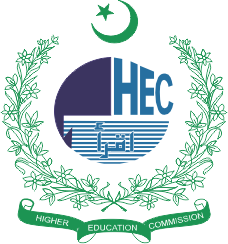Rhetoric of Violence in Political Discourses: A Comparative Study of Pakistani Politicians’ Speeches
DOI:
https://doi.org/10.63062/trt/V24.023Keywords:
Rhetoric, Political Discourse, Persuasion, Ideology, CDA, Violence, PoliticiansAbstract
Language plays a significant role in determining what goes on in an individual's mind. Politicians use language insidiously and persuasively to impart their ideologies and to win the consent of the general masses. Moreover, they also use certain lexicons to otherize the others. Speeches are delivered by politicians for positive self-representation and negative others representation. The aim of this study is to provide a comprehensive analysis of political discourses. For this purpose, the speeches of three Pakistani politicians, namely Imran Khan, Maryam Nawaz and Bilawal Bhutto, have been analysed from Sept. 2021 to May 2023. It is analysed how they exercise political rhetoric using different linguistic spins. The theoretical framework, including Paul Chilton (2004) Discourse Space Theory, is employed for this study. The data is taken from the YouTube channel of Pakistani news channels, namely ARY and SAMMA TV. The findings reveal that politicians make use of various discursive spins and rhetorical strategies to others.
References
Beard, A. (2000). The Language of Politics. London: Routledge
Berlin, J. A. (1992). Poststructuralism, cultural studies, and the composition classroom: Postmodern theory in practice. Rhetoric Review, 11(1), 16–33. https://doi.org/10.1080/07350199209388984
Chilton, P. (2004). Analyzing Political Discourse: Theory and Practice. London: Routledge.
Chilton, P. (2005). Vectors, viewpoint and viewpoint shift. Annual Review of Cognitive Linguistics, 3(1), 78-116.
Fairclough, N. (1995). Critical Discourse Analysis: The Critical Study of Language. London: Longman.
Feltham-King, Tracey, & Macleod, C. (2016). How content analysis may complement and extend the insights of discourse analysis: An example of research on constructions of abortion in South African newspapers 1978-2005. International Journal of Qualitative Methods, 15(1). https://doi.org/10.1177/1609406915624575
Inayat, A. (2019). Discourse of Power: Critical Discourse Analysis of Imran Khan’s pre- and Post-Election Speeches [Graduation thesis], University of Gujrat.
Khajavi, Y., & Rasti, A. (2020). A discourse analytic investigation into politicians' use of rhetorical and persuasive strategies: The case of U.S. election speeches. Cogent Arts & Humanities, 7(1). https://doi.org/10.1080/23311983.2020.1740051
Khalil, U., Islam, M., Chattha, S. A., & Qazalbash, F. (2017). Persuasion and political discourse: A critical discourse analysis of Imran Khan's election speech (2013). Pakistan Vision, 18(2), 193-210.
Khan, A. (2021). Stylistic Analysis Of The Discursive Techniques Employed By Politicians To Propagate Their Ideology. NUML Islamabad
Khan, M. H., Qazalbash, F., Adnan, H. M., Yaqin, L. N., & Khuhro, R. A. (2021). Trump and Muslims: a Critical Discourse Analysis of Islamophobic Rhetoric in Donald Trump’s Selected Tweets. SAGE Open, 11(1), 1–16. https://doi.org/10.1177/21582440211004172
Latupeirissa, D. S., Laksana, I. K. D., Artawa, K., & Sosiowati, I. G. A. G. (2019). On political language ideology: Critical view of Indonesian president speech. Journal of Language Teaching and Research, 10(4), 843. https://doi.org/10.17507/jltr.1004.23
Nusrat, A., Khan, S., & Shehzadi, Ms. S. (2020). Critical Discourse Analysis of Imran Khan Dharna Speeches in Socio-Political Perspective. Sjesr, 3(1), 9–19. https://doi.org/10.36902/sjesr-vol3-iss1-2020(9-19)
Reyes, A. (2011). Strategies of legitimization in political discourse: From words to actions. Discourse & Society, 22(6), 781–807. https://doi.org/10.1177/0957926511419927
Shafiq, Z. (2021). Discourse of political hate speech on Twitter in Pakistan. Harf-o-Sukhan, 5(4), 230-245. https://harf-o-sukhan.com/index.php/Harf-o-sukhan/article/view/225
van Dijk, T. A. (1995). Discourse semantics and ideology. Discourse & Society, 6(2), 243–289. https://doi.org/10.1177/0957926595006002006
van Dijk, T. A. (1998). Opinions and Ideologies in the Press. Approaches to media discourse/Blackwell. Oxford: Blackwell.
Van Dijk, T. (2006), Discourse and Power. Houndsmills: Palgrave
Wodak, R. (2001), What CDA is about - a summary of its history, important concepts and its developments. In R.Wodak & M. Meyer (Ed.).Methods of critical discourse analysis. London: Thousand Oaks - New Delhi: Sage Publications.
Downloads
Published
Issue
Section
License
Copyright (c) 2024 Saria Saeed, Mahar Akbar Jatyal, Dr. Muhammad Akbar Sajid

This work is licensed under a Creative Commons Attribution-NonCommercial 4.0 International License.



